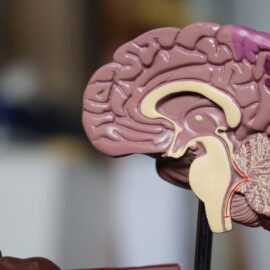

This article is an excerpt from the Shortform book guide to "Solve for Happy" by Mo Gawdat. Shortform has the world's best summaries and analyses of books you should be reading.
Like this article? Sign up for a free trial here.
Why do some people believe that we are immortal? Should this remove any fear of death?
Citing the double-slit experiment, the Big Bang theory, and the theory of relativity, Mo Gawdat argues that death isn’t the end of us. Thus, we shouldn’t let a fear of death interfere with our happiness.
Continue reading for a discussion of Gawdat’s ideas about death.
We Are Immortal (According to Mo Gawdat)
Gawdat’s assertion that death isn’t the end complements his other claim that, rather than being identical to our physical bodies, we’re actually immaterial beings observing the physical world. Because we’re immaterial, Gawdat argues that the death of our bodies does not end our lives; death is impermanent. Essentially, we are immortal. (Shortform note: Although Gawdat’s description of immaterial beings could be likened to a soul, he doesn’t use the word “soul”—or any other term that has particularly religious connotations—instead using terms like non-physical “observers.” We’ll follow suit and refrain from using the term “soul.”)
To defend this pillar, Gawdat first cites the double-slit experiment in quantum physics, in which subatomic particles are fired at a wall with two parallel slits in it. When a single particle is shot, it passes through both slits at once, thus ceasing to be a single particle. Rather, it becomes a probability wave function—basically, a wave capable of passing through both slits simultaneously. The wave reverts back to only a single particle, passing through one slit, when we observe it. The implication, Gawdat asserts, is that the physical world exists only when it’s observed.
(Shortform note: Although Gawdat claims the double-slit experiment reveals that the physical world only exists when it’s observed, Bohmian mechanics dictates that the particle’s path is predetermined, despite initial appearances to the contrary. According to this interpretation, human observation only appears to cause the particle to pass through one slit or the other because we don’t understand the underlying mechanisms governing the quantum level—the scale of atomic and subatomic particles. Thus, Bohmian mechanics dictates that events at the quantum level proceed independently of observation.)
Gawdat also appeals to the Big Bang theory, which holds that the universe expanded rapidly from a hyper-dense mass to create the universe as we know it today. Because the Big Bang theory implies the universe had a beginning, while the double-slit experiment implies the universe could exist only if it were observed, Gawdat reasons that life must have preceded the Big Bang to observe it unfolding.
(Shortform note: Gawdat’s claim that life exists independently of the physical universe and sustains it via observation, is tantamount to philosophical idealism, the view that consciousness is the foundation of reality. The progenitor of this view, George Berkeley, famously argued that esse is percipi—to be is to be perceived. And although his view was traditionally accompanied by belief in God, who sustained the entire universe by perceiving it, contemporary philosophers have likewise defended an atheistic account of idealism.)
Finally, because Einstein’s theory of relativity shows that our perception of time is illusory, Gawdat argues that life must exist outside of time, in four-dimensional spacetime. So, although birth and death appear to mark the beginning and end of our life, we actually transcend time. Death, therefore, simply returns us to our home outside of time.
By recognizing that the physical world is temporary and death is impermanent, we can shape our perceptions to better align with the happiness formula. For example, we’ll no longer view death as a fearful process but rather as a return to our natural, timeless state.
(Shortform note: In Happy, Derren Brown proposes a different approach to death. Because he assumes that death is permanent, Brown instead argues that happiness requires us to accept death and face it head-on. In particular, he suggests that by decreasing our attachment to the future, we can alleviate our fear of death and become happy. Thus, unlike Gawdat, Brown doesn’t rely on the alleged impermanence of death to cultivate happiness.)

———End of Preview———
Like what you just read? Read the rest of the world's best book summary and analysis of Mo Gawdat's "Solve for Happy" at Shortform.
Here's what you'll find in our full Solve for Happy summary:
- The six misconceptions that cause us to suffer
- How to remove the seven weaknesses that hinder your happiness
- The five pillars to becoming permanently happy






